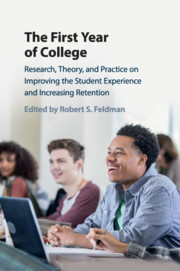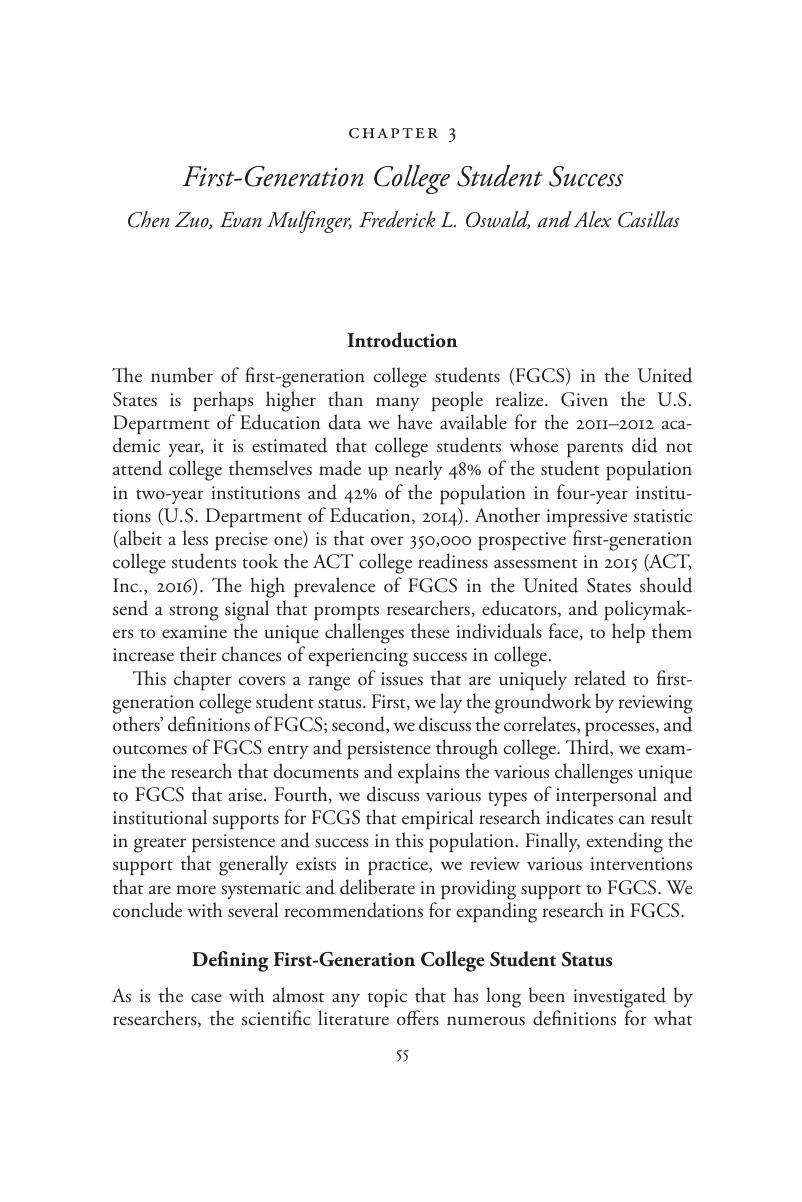 The First Year of College
The First Year of College Book contents
- The First Year of College
- The First Year of College
- Copyright page
- Contents
- Figures
- Tables
- Contributors
- Preface
- Part I Societal and Demographic Factors Underlying First-Year Student Success
- Chapter 1 Exploring the Role of Affordability in First-Year Student Access and Persistence
- Chapter 2 Realizing the Educational Benefits of Diversity
- Chapter 3 First-Generation College Student Success
- Part II Practices that Foster Student Success
- Part III Attitude and Behavior Changes that Promote Student Success
- Index
- References
Chapter 3 - First-Generation College Student Success
from Part I - Societal and Demographic Factors Underlying First-Year Student Success
Published online by Cambridge University Press: 21 December 2017
- The First Year of College
- The First Year of College
- Copyright page
- Contents
- Figures
- Tables
- Contributors
- Preface
- Part I Societal and Demographic Factors Underlying First-Year Student Success
- Chapter 1 Exploring the Role of Affordability in First-Year Student Access and Persistence
- Chapter 2 Realizing the Educational Benefits of Diversity
- Chapter 3 First-Generation College Student Success
- Part II Practices that Foster Student Success
- Part III Attitude and Behavior Changes that Promote Student Success
- Index
- References
Summary

- Type
- Chapter
- Information
- The First Year of CollegeResearch, Theory, and Practice on Improving the Student Experience and Increasing Retention, pp. 55 - 90Publisher: Cambridge University PressPrint publication year: 2017
References
- 2
- Cited by


